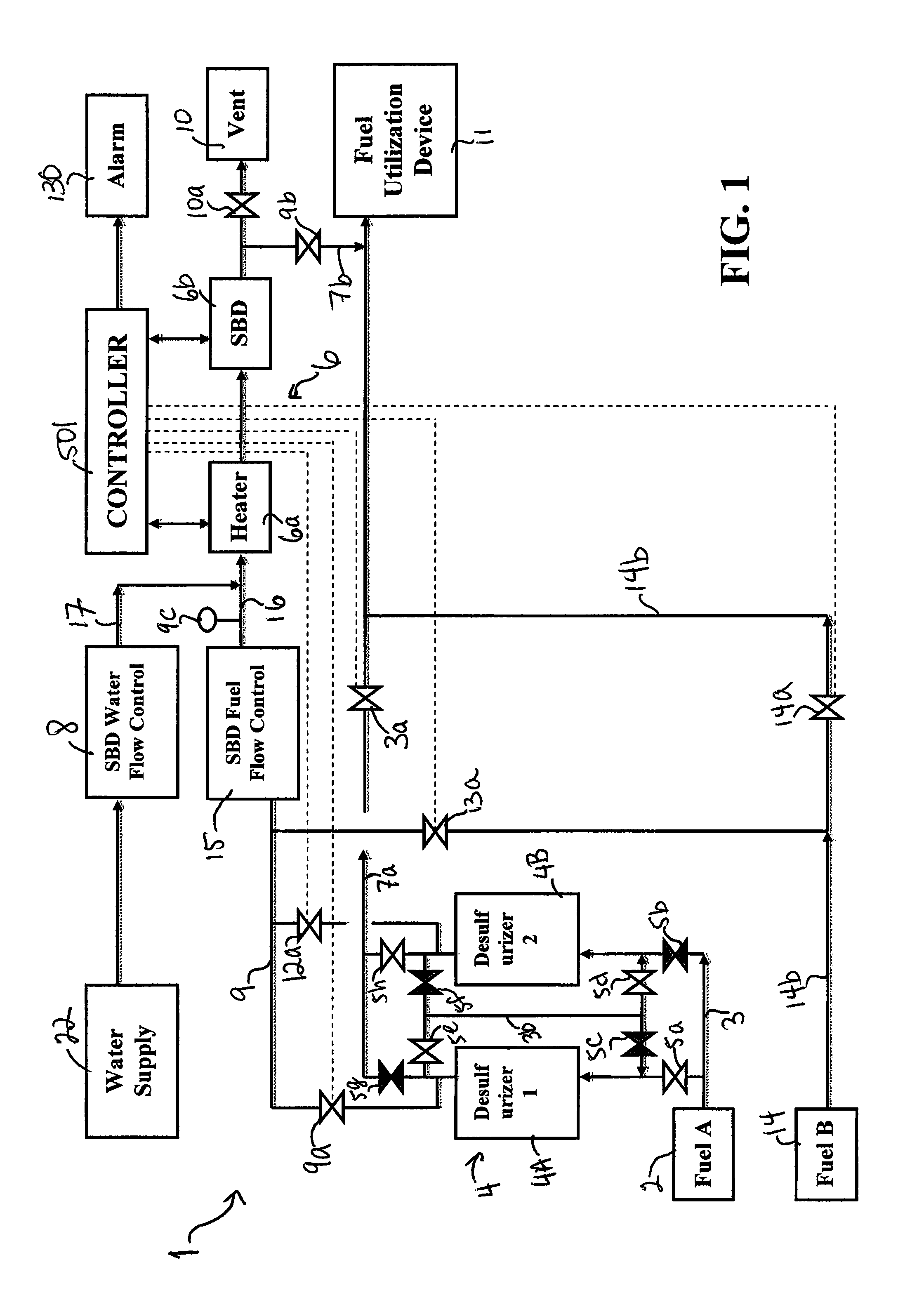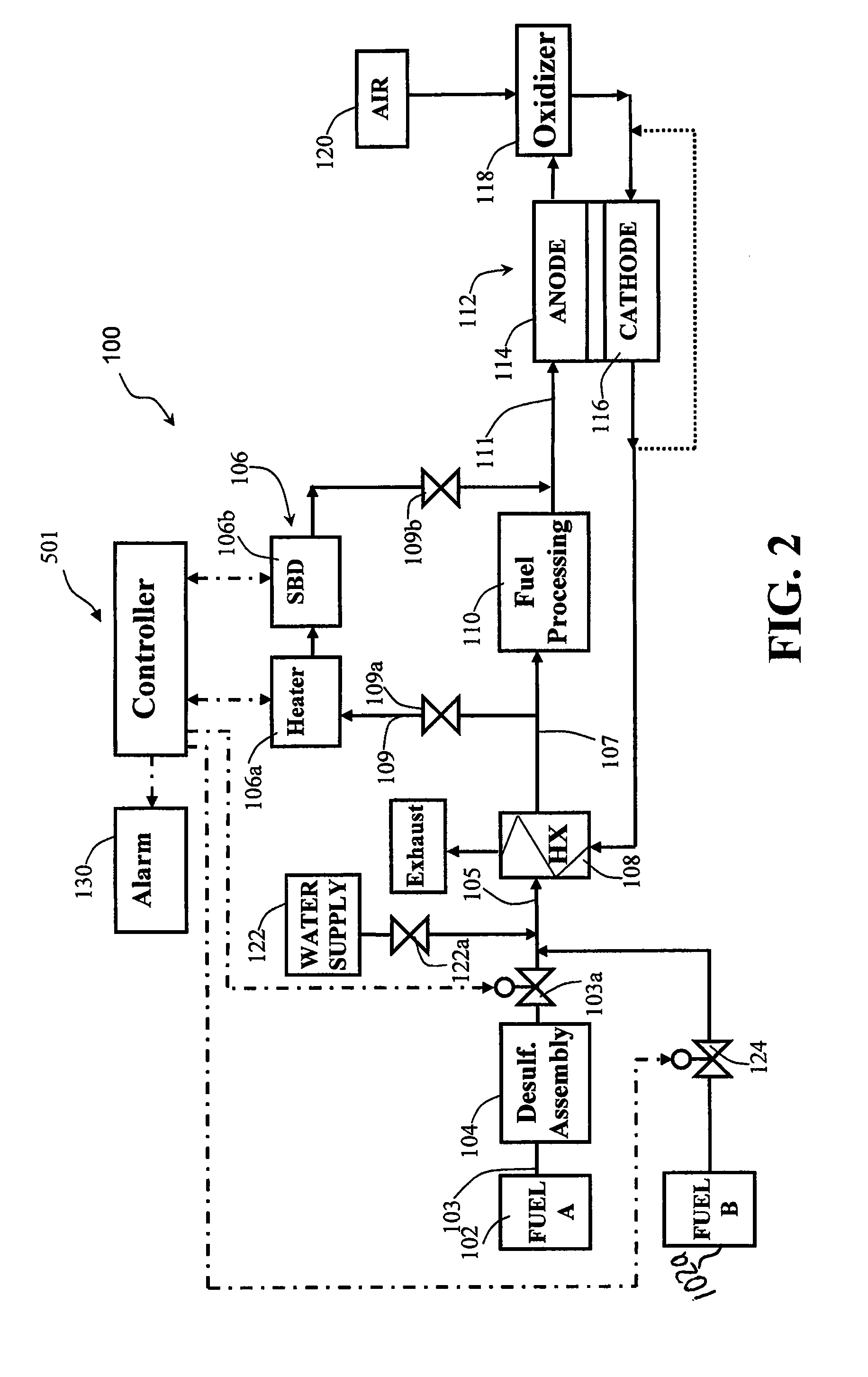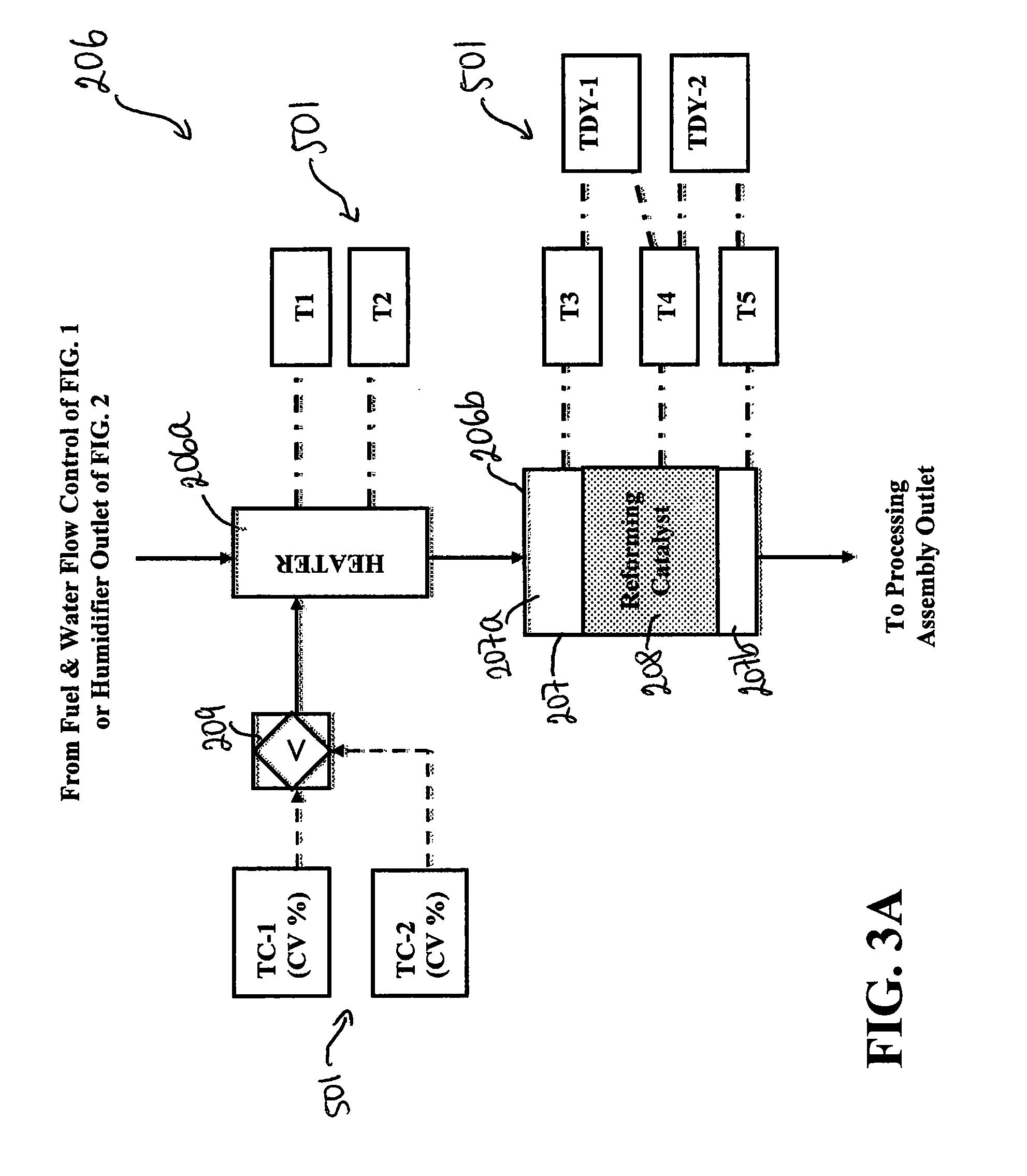Sulfur breakthrough detection assembly for use in a fuel utilization system and sulfur breakthrough detection method
- Summary
- Abstract
- Description
- Claims
- Application Information
AI Technical Summary
Benefits of technology
Problems solved by technology
Method used
Image
Examples
Embodiment Construction
[0024]FIG. 1 illustrates a fuel utilization system 1 including a desulfurizing system 4, including desulfurizers 4A and 4B, for removing sulfur-containing compounds from Fuel A received from a fuel supply 2 and a fuel utilization device 11 which receives desulfurized fuel from the desulfurizing system 4 and utilizes or processes the Fuel A. The fuel utilization device 11 may or may not also utilize other fuels, such as Fuel B, and is not limited to any specific number of fuels or number of fuel supplies from which the fuel utilization device 11 may receive fuel. The fuel utilization device 11 is any device, system or assembly that uses or processes fuel, and requires or prefers fuel that is free or substantially free of sulfur-containing compounds. Fuel utilization devices may include fuel cell systems, fuel reforming systems, power plants, such as fuel cell power plants, any devices operating on fuel or generating electrical or any other type of energy from fuel, and any other proc...
PUM
 Login to View More
Login to View More Abstract
Description
Claims
Application Information
 Login to View More
Login to View More - R&D Engineer
- R&D Manager
- IP Professional
- Industry Leading Data Capabilities
- Powerful AI technology
- Patent DNA Extraction
Browse by: Latest US Patents, China's latest patents, Technical Efficacy Thesaurus, Application Domain, Technology Topic, Popular Technical Reports.
© 2024 PatSnap. All rights reserved.Legal|Privacy policy|Modern Slavery Act Transparency Statement|Sitemap|About US| Contact US: help@patsnap.com










